Published on the occasion of the 37th anniversary of the Islamic Revolution
Iran, formerly known as Persia, is a vast country situated at the heart of the Middle East. The name Persia, deriving from the word Fars, a province located in Southeastern Iran, stands for a vast Empire which ruled over an enormous territory, extending from highlands of Iran to Central Asia.
Iran is home to one of the world's oldest major continuous civilizations and the history of Iran spans more than 7,000 years. New researches show that Iran has 3900 years of written history.
Archeological findings indicate that people lived in various parts of Iran as long as 15000 years ago. But, the history of human life in Iran, prior to 7000 years ago is still somewhat unclear and requires a great deal more exploration, excavation and study--all of which are presently under way.
The Persian civilization and its culture undoubtedly marked an important epoch in the history of human being in the world. Some scholars, however, are unearthing new information that suggests the first human civilization actually originated from what is now present-day Iran. Through the years, Iran's culture has influenced different parts of the globe, from the Nile River to the heart of Europe.
The Sassanid dynasty amassed wealth through trade activity along the Silk Road, and this exchange of cultural materials aided the spread of Persian art and culture. The Persian influence disseminated through Central Asia and China and along the aforementioned trade route, into the Silla Dynasty on the Korean peninsula.
Despite the ethnic diversity, Iran is rather homogenous in a religious and cultural sense. Iran is a multicultural society with a unique historical and Islamic background which traces its roots to the ancient Persia. .
The National Day of the Islamic Republic of Iran falls on February 11th. This year, the government of President Hassan Rouhani and people of Iran are celebrating the 37th National Day with a strong determination to work zealously for the progress and prosperity of their beloved homeland.
Thirty-seven years ago the world witnessed the victory of the Islamic Revolution which put an end to the dictatorial regime of the Shah in Iran. It was materialized as a result of wise leadership of Imam Khomeini and strong determination of the absolute majority of the Iranian people.
Shortly after the revolution, a referendum was held to determine the type of government to rule the country; the outcome of which was "Islamic Republic" voted for by more than 98 percent of the people who participated in the referendum. So far about 40 elections (presidential, parliamentary and city council members) have been held in Iran, each of which is indicative of the scope of people’s participation in determining their destiny.
Foreign policy and diplomatic affairs:
The Islamic Republic of Iran is like a bridge in the heart of the region linking the Caspian Sea and the Persian Gulf, as well as the east and west Asia together. Therefore, its security and stability can have undeniable effect on the entire unstable Middle East region and west Asia. That’s why peaceful coexistence, promotion of bilateral relations and extensive regional and international cooperation are seriously pursued in Iran's foreign policy.
to this end, the strategic decision adopted by the Islamic Republic of Iran to defuse regional crises and making humanitarian interfere in some regional crises like Syria, Yemen. Full positive participation in the peace process negotiation for Syria, Yemen and elsewhere is top agenda of the current government of Islamic Republic of Iran.
Iran has established constructive and active relations with most countries around the world in different continents and is an active member of various international and regional institutions. United Nations, Organization of Islamic Conference, Non-Aligned Movement, ADC, Shanghai Group, D8, ECO among the others.
During the past 37 years, the IRI, although faced with many challenges like the unjustified sanction against Iran peaceful nuclear program , made its way to economic progress especially in the energy sector and natural resources most relaying on its domestic resources. In this connection to facilitate FDI, which provides opportunities for foreign investors to enter into areas such as infrastructure development, industrial joint venture partnership, oil and gas field development, agriculture and even the service sector.
Iran with its unique geographical position next to the Middle East, Persian Gulf, Central Asia and Europe , offers prime location for Korean companies to manufacture consumer and other goods not only for Iran's own 80 million consumers but also as regional manufacturing hub for nearby countries.
Since 1979 and after the establishment of the Islamic Republic, Iran's foreign policy attached great importance to the extension of more profound relations with the East Asian countries, in particular with Northeast Asian countries, in which beyond any doubt the Republic of Korea occupies a special position in this regard. Despite of some ups and down , the bilateral relations between Iran and Korea as one of the most stable and solid partners in northeast Asia is marked by the exchange of high level official visits as well as by the frequent exchange of delegations in the private sector between the two countries and increasing mutual academic and research contacts.
With Iran and Korea both being dynamic countries in their respective regions it is strongly believed that the prospects for further development of fruitful bilateral relations are bright and promising.
The direct participation and investment from Korea in the economic and tread sector of Iran, is considered little but taking into account the fact that trade and investment, especially in oil-related items, will be growing day by day after removing and lifting of sanction because for Iran, ROK is a reliable economic partner therefore Iran is seeking more investors from this country.
Economic opportunities:
Existing free trade zones in different parts of Iran allow foreign companies to take advantage of the geographical position of Iran.
The free trade zones as centers of trade activities play an important role in absorbing FDI and re-exporting goods. Now there is no barrier in the way of technical and industrial development and the country is moving towards economic progress and prosperity. Thanks to its rich oil and gas reserves, Iran has always been considered a very cost-effective market. Considering its industrial and productive potentials in various fields especially in oil, gas, petrochemicals, steel, power and an increase in its exports of manufactured goods, Iran will be changed into a much stronger market.
Cheap energy, a highly qualified labor force, ample natural resources and the protection and promotion of foreign investment are advantageous for foreign investors in Iran.
With those economic opportunity and privilege, Iran invite the Korean business chobol or SME to be more active in various fields in Iran , like South Pars projects, petrochemical projects, vessels, tankers, pharmaceutical projects, auto industries, iron and steel, power plants and electric projects. We believe that Korean long and continuations presence in Iranian market and on the other hand the satisfaction of Iranian from Korean product is a good and valuable asset in which to be protected by Korean government and people.
Significant developments have taken place in various oil, gas, and petrochemical industries in the Islamic Republic of Iran. South Pars Gas Field is one of the biggest independent gas resources in the world with gas reserve estimated nearly 19 trillion cubic meters which consists 8% of total global gas reserves and around 50% of Iran's known gas reserves. This field also, includes 18 billion barrels of gas condensates.
Top 10 UNESCO World Heritage Sites in Iran:
Iran has seen an increase in the number of annual visitors over the past few years, and the recent lifting of economic sanctions is sure to attract even more. Home to one of the oldest civilizations, Iran has no shortage of sites to see. When it comes to UNESCO World Heritage Sites, it boasts an impressive 19 registered cultural sites. Palaces, bazaars, places of worship, ancient water systems, and remnants of the great Persian Empire dominate this list. The Culture Trip explores the top ten UNESCO World Heritage Sites in Iran.
Meidan Emam, Isfahan:
It is easy to spend an entire day meandering in Meidan Emam, alternating between marveling at jaw-dropping architecture and haggling with business-savvy bazaar keepers. It is no wonder that the city of Isfahan is known as nesfe jahan (half the world). One of the first sites in Iran to be registered with UNESCO in 1979, this square was built by Shah Abbas in the 17th century. One major monument stands on each side of this grand square, and they are all connected by two-story arcades. Imam Mosque has the largest dome in the city, while Sheikh Lotfollah Mosque dazzles visitors with its splendid tile work. Ali Qapu Palace is most notable for its music room, mosaic stairs, and views of the square, and the gate of the Imperial Bazaar will take you through one of the oldest bazaars in the region. At the end of the day, you will truly feel as though you have seen half of the world.
Meidan Emam (Naqsh-e Jahan Square), Isfahan, Iran
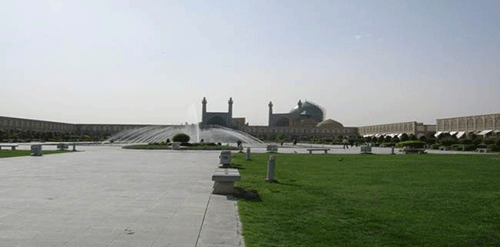
Golestan Palace
Golestan Palace was more recently included with UNESCO in 2013. Located footsteps from Tehran’s Grand Bazaar, this lavish palace became the Qajar dynasty’s seat of government. The architecture exemplifies this dynasty’s fusion of early Persian design and Western influences. Magnificent pools, green spaces, and mosaic fa?ades are located throughout this complex, and building interiors vary from bright grand halls hanging with ornate chandeliers to dim cozy nooks of mirrored walls and stained glass. The masterpieces of painter Kamal ol-Molk are also housed throughout the buildings and not to be missed. Take advantage of the opportunity to dress up as a Qajar prince or princess and have your picture taken against the spectacular backdrop of authentic Persian architecture.
Golestan Palace, Tehran, Iran

Tower and fort of Bam ? Charlie Phillips/Flickr
Bam and its cultural landscape
This ancient desert city of the southern Kerman province was registered with UNESCO in 2004. An overview of Bam immediately gives visitors the impression of being in a life-sized sand castle. The most recognized monument, Arg-e Bam, dates back over 2,000 years to the Parthian Empire. This citadel was build out of khesht (sun-dried mud bricks) in the 6th to 4th centuries B.C. and served as the governor’s quarters. Reconstruction of this landmark began after a devastating earthquake nearly flattened this mud brick city, killing over 26,000 people in 2003. Dates, a particularly special export of Bam, flourish especially well thanks to the vast system of qanats (an ancient underground water system) still used today.
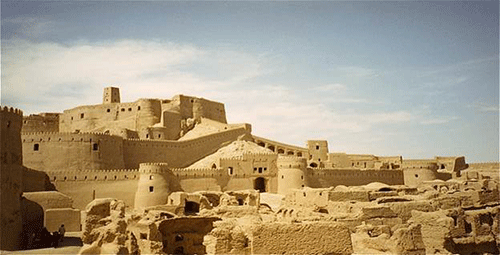
Pasargadae
Brazilian poet Manuel Bandeira published the poem Vou-me embora pra Pasargada (I’m off to Pasargadae) describing a man who, unsatisfied with his life, talks about escaping to this utopian city. In a remote location some 50 kilometers from Shiraz, it might not presently look like the utopia it may have been in its heyday, but Pasargadae was the first capital of the Achaemenid Empire in the 6th century B.C., founded by Cyrus the Great. Added to UNESCO in 2004, it is also known as the first multicultural empire that respected cultural diversity. Ruins of the palace and citadel remain, but the main feature is the mausoleum of Cyrus the Great, said to have been visited by Alexander the Great himself after destroying Persepolis.
Pasargadae, Iran

Sheikh Safi al-din Khanegah and Shrine Ensemble in Ardabil
This shrine ensemble located in the northwestern city of Ardabil joined UNESCO in 2010. It is the location of the tomb of Sheikh Safi al-din, a leader of Islamic Sufi mysticism. Constructed between the 16th and 18th centuries, it is a fusion of Sufi tradition and Iranian traditional construction. The route to the shrine consists of seven segments representing the seven stages of Sufi mysticism, and other parts are divided into eight gates, which mirror the eight attitudes. The areas of this shrine have served various purposes over the years including a library, mosque, school, mausolea, and cistern, among others.
Sheikh Safi al-din Khanegah and Shrine Ensemble, Ardabil, Iran
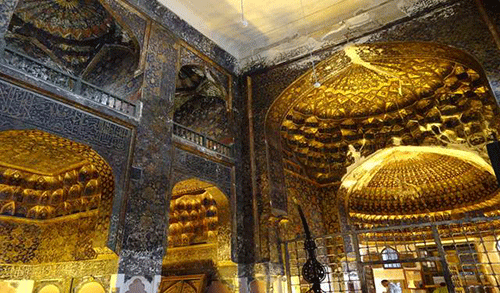
Tabriz Historic Bazaar Complex
Tabriz has always been an important commercial center due to its strategic location along the Silk Road. The Bazaar, added to the UNESCO inventory in 2010, is one of the oldest bazaars in the Middle East. An interconnected series of red brick buildings, each part of this complex sells a different product such as gold and jewelry, shoes, or various household items. Perhaps the most notable section, however, is the rug bazaar where those in the business can be seen selling dyed thread, sewing up loose rug ends, and transporting stacks of rugs.
Tabriz Historical Bazaar, Tabriz, Iran
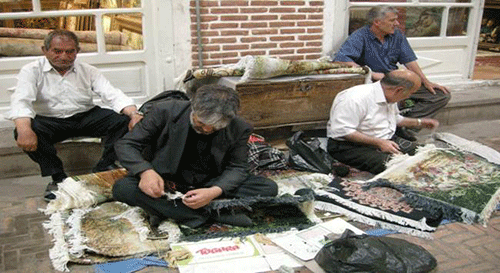
Soltaniyeh
The dome of Soltaniyeh was constructed in the 14th century under the order of Uljayto, also known as Mohammad Khodabandeh, the Ilkhanid ruler in Tabriz. Baptized as a Christian, Uljayto converted to Buddhism in his youth and later to Islam. The double-shell brick dome of Soltaniyeh, inscribed as a UNESCO site in 2005, now serves as his mausoleum. The ceramic turquoise dome glistens in the sun from afar, and as you approach the site, you see eight slender minarets decorate this octagon. The interior is brimming with intricately detailed work, representing outstanding Islamic architecture.
Dome of Soltaniyeh, Soltaniyeh, Iran

Shushtar Historical Hydraulic System
Registered in 2009 and hailed as a ‘masterpiece of creative genius‘ by UNESCO, this ancient irrigation system dates back to Darius the Great in the 5th century B.C. It consists of two main diversion canals on the Karun River, which supply the city of Shushtar with water through a series of tunnels. Water cascades out of these tunnels into the basin which then flows onto the plain land for orchards and farming areas. Other engineering structures of this ensemble include bridges, dams, and water mills. It is a fine example of the knowledge of Mesopotamians alongside the influence of Roman engineering.
Shushtar Historical Hydraulic System, Shushtar, Iran
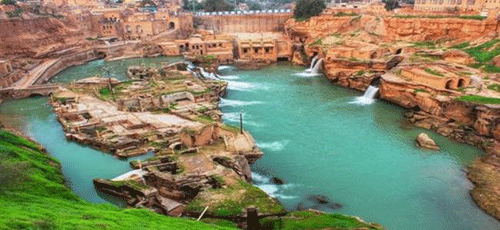
Armenian Monastic Ensembles of Iran
The West Azerbaijan Province in northwest Iran has a fairly sizable Christian Armenian population, so the number of churches in this area is no surprise. The three monastic ensembles, St. Thaddeus (the oldest dating back to the 7th century), St. Stepanos, and the Chapel of Dzordzor, were listed with UNESCO in 2008. Their significance lies in their architectural representation of the exchanges between the regional cultures including Byzantine, Orthodox, and Persian. The monasteries have withstood numerous calamities, both human and natural, throughout the centuries. St. Stepanos, arguably the most well-known of the three, stands in a canyon past the twists and bends of the Aras River on the Azerbaijanborder. These churches are still places of pilgrimage for the Armenian community.
St. Thaddeus, West Azerbaijan, Iran
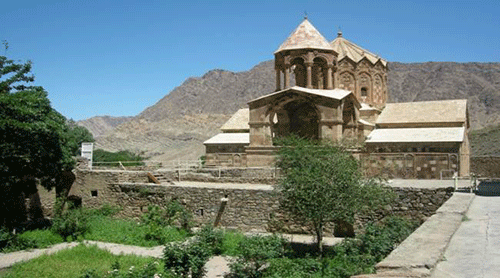
St. Stepanos, Jolfa, Iran Chapel of Dzordzor, near Maku, Iran
Persepolis
One of the first three sites to join UNESCO in 1979, Persepolis, known locally as Takhte Jamshid, was the ceremonial capital of the Achaemenid Empire in the 5th century B.C. The site was chosen and constructed under Cyrus the Great, Darius I, and King Xerxes. What remains of this pinnacle of Persian civilization are massive columns and former palaces, innumerable reliefs depicting nationalities that once walked through there, and three humbling sepulchres on the hillside behind the ruins. Climbing the steps to enter the Gate of All Nations will enlighten visitors to the magnitude of this once magnificent empire.
Persepolis, Iran
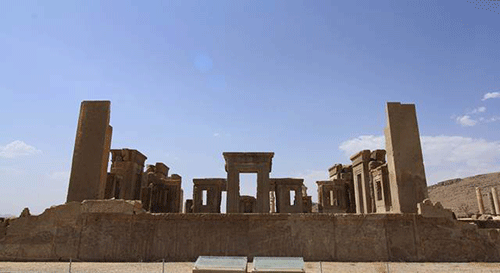
Religious Attractions
Ancient Persia is the origin if “Zoroastrianism “as one of the most significant religions. The official religion of Iran is Islam and majority of its followers and Shia. Judaism, Christianity and Zoroastrianism are also officially recognized with equal civil, political and economic rights. One of the main purposes of traveling within Iran is pilgrimage, the major pilgrimage destinations in Iran are: Holy Shrine Complex in Mashhad, Fatima Masumeh Holy Shrine in Qom, Shah Cheragh Holy shrine, Tomb of Daniel the Prophet in Susa.
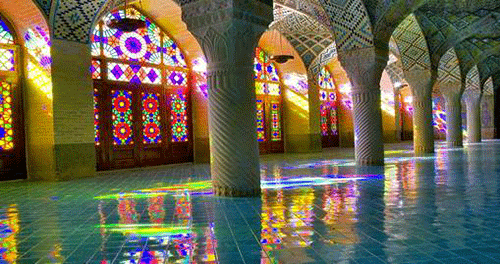
Iranian Souvenirs and Handcrafts
There is a wide range of souvenirs in Iran which can meet tastes and price levels. Carpets, rugs, silverworks, marquetry and wood carvings in Isfahan; Qashqai carpets and weavings in Shiraz; carpets, rugs, Kilim and various types of nuts in Tabriz; carpets and pistachio in Kerman; saffron in Mashhad and all kinds of souvenirs would be available in Tehran. Iranian handicrafts are the manifestation of art, culture and ancient civilization which overwhelm all visitors by the delicate design. The rich millennial Persian civilization astonishes tourists and persuades them to take a piece of this historical land as a memorable souvenir. The most significant and well-known Iranian handicrafts are carpet and Kilim. The Persian carpet with its design, textures and permanent color has privilege worldwide. More than 229 handicrafts have been recognized in Iran of which Persian carpet-weaving of Fars Province and designs and patterns of carpets of Kashan have been inscribed in the UNESCO World Heritage List. Other remarkable types of Iranian handicrafts are brocade, vitreous enamel, velvet weaving, pottery and ceramics.
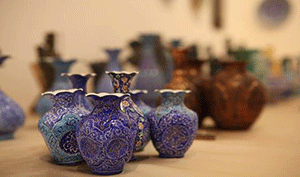
Iranian Cuisine
There are over 400 different kinds of food and sweets in Iran. The ingredients are generally cereals, grains, vegetables and proteins. The existence of various ethnic groups on Iran alongside its rich culture has made the Iranian cuisine very diversified. Most popular and famous foods in Iran are: Aab-Gousht, Ghormeh-Sabzi and many types of Kebabs, Sweets covered with nuts. The Iranian culinary style is unique to Iran, though has historically both influenced and has been influenced by Iran's neighboring and conquered regions at various stages throughout its history.
Typical Persian main dishes are combinations of rice with meat, such as lamb, chicken, or fish, and vegetables such as onions, various herbs, and nuts. To achieve a balanced taste, characteristic Persian flavorings such as saffron, dried lime, cinnamon, and parsley are mixed delicately and used in some special dishes.
Iranian Dress: Iran geographically being a huge and demographically being a diverse country has many regions and ethnicities. Every region has its own folk-dances with-in Iran what are usually performed during the festivities and traditional celebrations. And when it comes to Iranian folk-dances, every region has its own distinctive costuming.
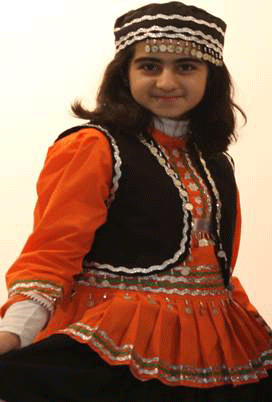
Hospitality
One of the most impressive elements which would make trips to Iran very extraordinary and delightful is being welcomed and served by the hospitable Iranians. The etiquettes and behaviors towards travelers by Iranians are rooted in their cultural beliefs. Iranian hospitality makes the journey memorable and encourages tourists to want to revisit this great country and wonderful travel destination.
Biography of Dr. Hassan Rouhani, Honorable President of Islamic Republic of Iran
Dr .Hassan Rouhani was born on 12 November 1948 in Sorkhe (Semnan province),Lawyer,Muslim cleric, Representative of the Supreme Leader to the Supreme National Security Council, Member of the Assembly of Experts, head of the Political and Social Committee of the Assembly of Experts, President of the Center for Strategic Research.Education:
Ph.D. Constitutional Law, Glasgow Caledonian University, UK
? (Thesis entitled: The Flexibility of Shariah; Islamic Law)
? M. Phil. Law, Glasgow Caledonian University, UK
? (Thesis entitled: The Islamic legislative power)
? B. A. Judicial Law, University of Tehran
Seminary Studies:
Kharij Fiqh and Usul (Principles of Islamic Jurisprudence); taught by such masters as Late grand Ayatollah Seyed Mohammad Mohaqqeq Damad, Late grand Ayatollah Sheikh Morteza Haeri, and Late grand Ayatollah Seyed Mohammad Reza Golpayegani. Advanced Studies; taught by such masters as late grand Ayatollah Soltani, Late grand Ayatollah Fazel Lankarani, and Late grand Ayatollah Sheikh Mohammad Shahabadi . Publications Published about 100 books and scientific papers. Supervised development and writing of more than 700 important strategic studies with policy recommendations in the past 20 years.
Books:
1. National Security and Nuclear Diplomacy ? October 2011
2. National Security and Economic System of Iran ? August 2010
3. Islamic Political Thought; Vol. 1: Conceptual Framework ? December 2009
4. Islamic Political Thought; Vol. 2: Foreign Policy ? December 2009
5. Islamic Political Thought; Vol. 3: Cultural and Social Issues ? December 2009
6. Memoirs of Dr. Hassan Rouhani; Vol. 1: The Islamic Revolution 2008
7. An Introduction to the History of Shia' Imams ? 2012
8. Age of Legal Capacity and Responsibility ? October 2012
9. Introduction to Islamic Countries ? 2008
10. Islamic Revolution ; Roots and Challenges ? 1997
11. Fundaments of Political Thoughts of Imam Khomeini ? 1999
12. Role of Seminaries in Moral and Political Developments of Society


